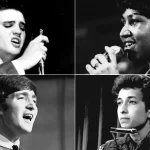
Welcome to the captivating world of male modeling, where stereotypes are shattered, and masculinity is redefined. In this blog post, we will delve into the intriguing evolution of male modeling, exploring how it has transformed over the years to challenge traditional norms and promote inclusivity. Get ready to discover how male models are not just faces but also voices advocating for diversity and equality in the fashion industry. Let’s embark on a journey through time and trends in The Evolution of Male Modeling: Breaking Stereotypes and Redefining Masculinity!
The Evolution of Male Modeling: Breaking Stereotypes and Redefining Masculinity
Male modeling has a rich historical background that dates back to the early 20th century when it was predominantly focused on showcasing traditional masculinity. However, as society evolved, so did the standards in the modeling industry. Male models today are breaking free from stereotypes by embracing a more diverse and inclusive representation of what it means to be masculine.
Gone are the days when male models were confined to a narrow definition of beauty and style. The modern era celebrates men of all shapes, sizes, backgrounds, and identities, challenging traditional gender norms along the way. This shift towards inclusivity has opened up opportunities for male models to express themselves authentically and redefine masculinity on their own terms.
Through their influence in fashion campaigns, runway shows, and social media platforms, male models are not just striking poses but also using their platform to advocate for gender equality and representation. The evolution of male modeling is paving the way for a more accepting and progressive industry where diversity thrives.
Historical Background of Male Modeling
Male modeling has a rich history that dates back to the early 20th century, with men initially serving as mere accessories to female models. In the 1960s and 1970s, the emergence of male supermodels like David Bailey and Twiggy paved the way for men to step into the spotlight.
As fashion evolved in the late 20th century, male models began gaining prominence on runways and in ad campaigns. The iconic “heroin chic” look of the ’90s brought forth edgier male models like Kate Moss and Mark Wahlberg, challenging traditional notions of masculinity.
In recent years, male modeling has seen a shift towards inclusivity and diversity, with brands embracing models of all shapes, sizes, and backgrounds. This evolution marks a significant departure from its origins and sets a new standard for representation in the industry.
Redefining Masculinity Standards in the Modeling Industry
In the dynamic world of male modeling, traditional masculinity standards are being redefined. Gone are the days when only muscular or rugged looks dominated the industry. Today, diversity and inclusivity are celebrated as more models break stereotypes and embrace their unique qualities.
Male models now come in all shapes, sizes, and backgrounds, challenging narrow beauty ideals. From gender-fluid to unconventional styles, the industry is shifting towards a broader definition of what it means to be masculine. This shift not only promotes authenticity but also empowers individuals to express themselves freely without conforming to outdated norms.
By embracing a more inclusive approach, male modeling is paving the way for greater representation and acceptance of diverse identities. This evolution signifies a positive change in societal perceptions of masculinity and highlights the importance of breaking free from rigid gender expectations in fashion and beyond.
Challenging Traditional Gender Norms and Stereotypes
In the realm of male modeling, there’s a revolutionary shift happening – one that challenges long-standing gender norms and stereotypes. Gone are the days where masculinity was narrowly defined by rigid standards. Male models today are breaking free from traditional molds, embracing diversity in all its forms.
By defying conventional expectations of what it means to be masculine, these models are paving the way for a more inclusive industry. They’re showcasing a range of expressions beyond stoicism and strength, proving that vulnerability and sensitivity can coexist with confidence and charm.
Through their work on runways and campaigns, male models are dismantling outdated beliefs about how men should look and behave. They inspire others to embrace authenticity over conformity, sparking conversations about acceptance, individuality, and self-expression.
Promoting Diversity and Inclusivity in Male Modeling
Male modeling has long been associated with a narrow definition of beauty and masculinity. However, in recent years, the industry has made significant strides in promoting diversity and inclusivity. Models from various backgrounds, ethnicities, body types, and gender identities are now being embraced on runways and in campaigns.
This shift towards greater representation is not just a trend; it’s a powerful movement challenging outdated norms. By showcasing a wide range of faces and bodies, male models are breaking stereotypes and reshaping societal perceptions of what it means to be masculine. This push for diversity sends a strong message that beauty comes in all forms.
In embracing this new era of male modeling trends, the industry is creating space for individuals who have historically been marginalized or underrepresented. The promotion of diversity is not only about aesthetics but also about fostering acceptance, empowerment, and equality within the fashion world.
Impact of Male Modeling on Gender Equality and Representation
Male modeling has played a significant role in promoting gender equality and representation in the fashion industry. By challenging traditional norms of masculinity, male models are breaking barriers and paving the way for inclusivity. Their presence on runways and in campaigns sends a powerful message that beauty comes in all forms, regardless of gender.
The impact of male modeling goes beyond the runway; it is reshaping societal perceptions of what it means to be masculine. More diverse representations help dismantle harmful stereotypes and encourage acceptance of individuality. As male models embrace their unique identities, they inspire others to do the same, fostering a more inclusive environment for everyone.
Through their visibility and influence, male models are contributing to a cultural shift towards embracing diversity and redefining beauty standards. By showcasing different body types, ethnicities, and styles, they are championing authenticity and empowering people to embrace their true selves without fear or judgment.
The Influence of Male Models on Men’s Mental Health and Body Image
Male models play a significant role in shaping men’s mental health and body image. By showcasing diverse body types and appearances, they challenge the unrealistic beauty standards that can contribute to insecurities among men. Seeing male models confidently embrace their unique features can inspire others to feel more comfortable in their skin.
The representation of different ethnicities, ages, and sizes in the modeling industry sends a powerful message of inclusivity and acceptance. This diversity helps break down stereotypes and encourages men to celebrate their individuality without feeling pressured to conform to narrow ideals of masculinity. Male models have the ability to promote self-acceptance and redefine traditional notions of attractiveness.
Through their presence on runways, campaigns, and social media platforms, male models have the potential to positively impact how men perceive themselves. By promoting authenticity and embracing diversity, they encourage a shift towards healthier attitudes regarding body image and overall well-being among males everywhere.
Embracing a New Era of Male Modeling Trends
As male modeling continues to evolve, it is essential to embrace the new era of trends that are reshaping the industry. By breaking stereotypes, redefining masculinity standards, challenging traditional gender norms, promoting diversity and inclusivity, and influencing men’s mental health positively – male models are playing a significant role in advancing gender equality and representation. Embracing this shift towards a more inclusive and diverse landscape in male modeling not only benefits the industry but also society as a whole. It signifies progress towards a more accepting and open-minded world where individuals can truly express themselves without limitations or constraints. The future of male modeling looks promising as it moves towards an era of empowerment, authenticity, and positive change.

